Belgrade University - Faculty of Forestry, in cooperation with the World Association of Soil and water Conservation, organized third conference of this association in Belgrade from August 22-26.2016.
The Conference was dedicated to the protection of soil and water resources and to the degradation factors and practical measures against adverse impacts through following topics:
New challenges to soil and water resources in condition of climate change
Land degradation processes and mechanism
Soil and water conservation strategies to adapt and mitigate climate change
Soil and water conservation measures benefits assessment
Sustainable watershed management
Social and economic aspects and policies related to soil and water conservation
At the opening ceremony, Dean of the Faculty of Forestry Ratko Ristić opened the Conference and welcome speeches also gave Assistant Minister of the Ministry of Education Viktor Nedović, President of WASWAC Li Rui, President of ESSC Carmelo Dazzi, Secretary of Secretariat for Environment of Belgrade Goran Trivan, Director of Institute for Forestry Ljubinko Rakonjac, Director of the Institute for Nature Conservation of Serbia Aleksandar Dragišić, Representative of Water Management Institute "Jaroslav Cerni" Milutin Stefanović, President of the Organising Committee of WASWAC Conference Miodrag Zlatic and President of International Youth Forum of SWC Bin Wang.
In the working part of the Conference, first plenary session started with the presentation of Ratan Lal, the highest world authority on the topics of erosion and erosion control. Within the same session, there were presentations of Miodrag Zlatic, Panos Panagos, Guobin Liu, Minchang Shi and Jose Rubio that obtained topics of demographic trends in the context of climate change and sustainable soil management, then erosion processes in Europe, as well as the influence of SWC on soil security.
Special attention was dedicated to the International Youth Forum of SWC, where 10 best papers were awarded with the price of 1000 USD by the foundation of the Chinese Institution DATUM.
Plenary sessions of the topics were organized after paper presentations. Moderators' persons of the topics gave reports at the closing ceremony as following:
1. REPORT of Topic A: New challenges to Soil and Water Resources in Condition of Climate Change
2. REPORT of Topic B. Land degradation processes and mechanism
B1 - Causes of land degradation
3. REPORT of Topic B2 (a): Erosion modelling
4. REPORT of session B2 (b)- Modeling water erosion
5. REPORT of session B3-Land degradation processes and mechanisms
6. REPORT of Topic C: Soil and water conservation strategies to adapt and mitigate climate change
7. REPORT of Topic D. Soil and water conservation measures benefits assessment
8. REPORT OF Topic E. Sustainable watershed management
9. REPORT of Topic F(a): Social and Economic Aspects and Policies Related to Soil and Water Conservation
10. REPORT of Topic F(b): Social and Economic Aspects and Policies Related to Soil and Water Conservation
The main proposal of WASWAC is establishing global project in mapping and assessing erosion hazard and use of contemporary protection technologies.
Besides of professional, conference had also socio-cultural character. It was organized sightseeing of Belgrade. Welcome dinner was organized on the boat "Kruna".
Field trip was organized at the last conference day partly in Vojvodina province. First, we visited the Residence of Prince Milosh (Serbian: Konak Kneza Miloša) - a royal residence in the Topchider municipality of Belgrade, Serbia. It was originally used as the palace of Prince Milosh Obrenovich. It was built in 1831, after Serbia was given autonomous status in the Ottoman Empire. The grounds include a plane tree over 160 years old, one of the oldest in Europe.
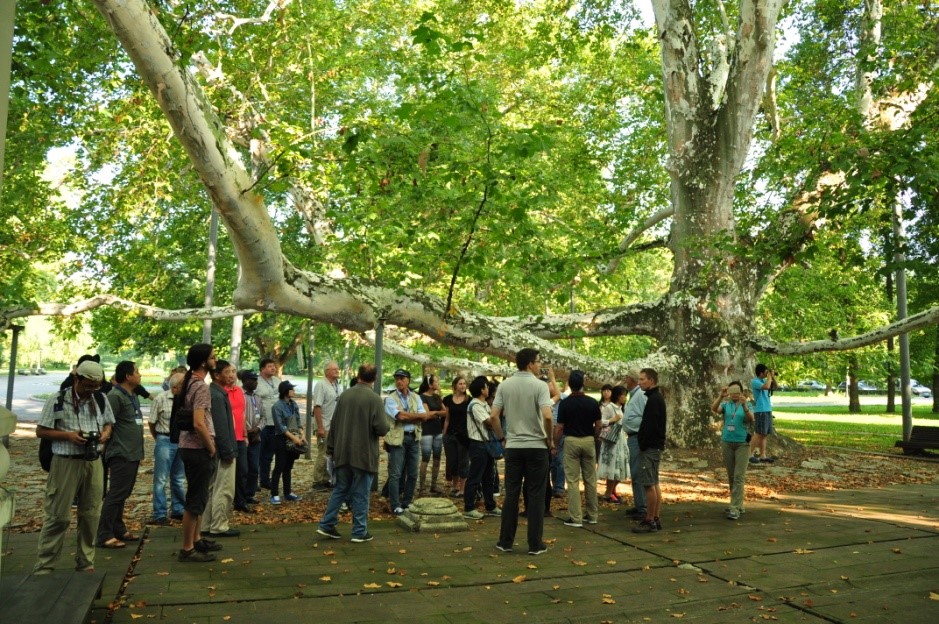
Nearby we visited regulation of Topciderska River which is regulated from the mouth up to 12.8 km by implementation of urban type of regulation, with prismatic, covered riverbed. In the sector through the part of industrial area Rakovica, riverbed is closed, as collector type. The upstream section of the river bed is not regulated, overgrown by shrubs and grass, with reduced capacity for maximal discharge.
We visited the shelterbelt on the way to the Dolovo village, which is about 30 years old. It consists of 2 rows of black walnut (Juglans nigra L.) and 3 rows of birch (Betula pendula Roth) on the left side of the road, and 2 rows of black pine (Pinus nigra Arnold) and 2 rows of birch (Betula pendula Roth) on the right side of the road.
The shelterbelt width, including the road area is about 50 m. The width of the shelterbelt on the left side of the road is 14 m, and 11 m on the right side. The distance between the trees in a row is 2.5 m on the left side, and 4 m on the right side. The distance between the rows and the road is 3 m on both sides.
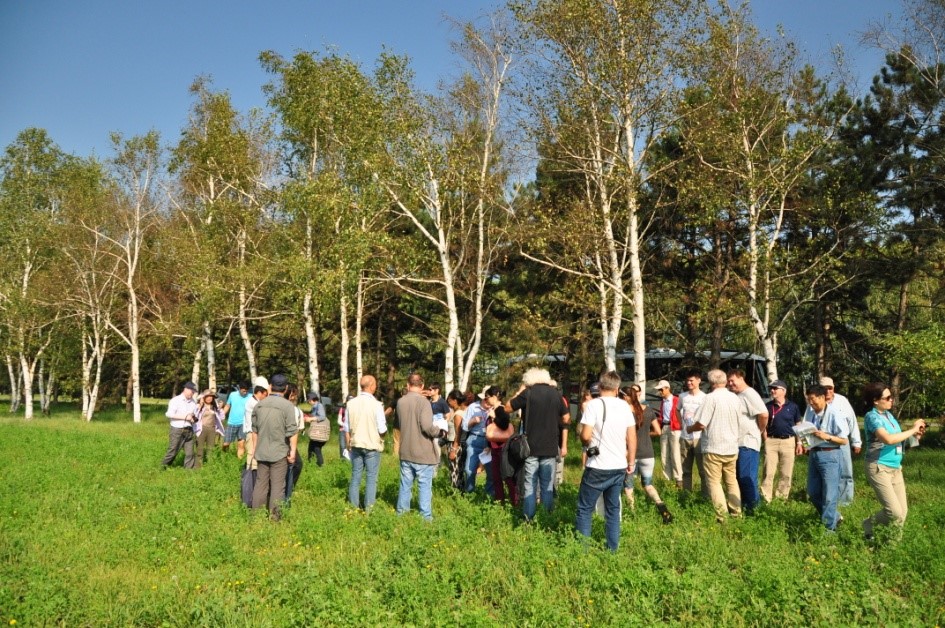
We visited Viminacium - a major city (provincial capital) and military camp of the Roman province of Moesia (today"s Serbia), and the capital of Moesia Superior. The city dates to the 1st century AD, and at its peak it is believed to have had 40,000 inhabitants, making it one of the biggest cities of that time. It lies on the Roman road Via Militaris. Viminacium was devastated by the Huns in the 5th century, but was later rebuilt by Justinian. It was completely destroyed by the arrival of Slavs in the 6th century. Today, the archaeological site occupies a total of 450 hectares (1,100 acres), and contains remains of temples, streets, squares, amphitheaters, palaces, hippodromes and Roman baths.
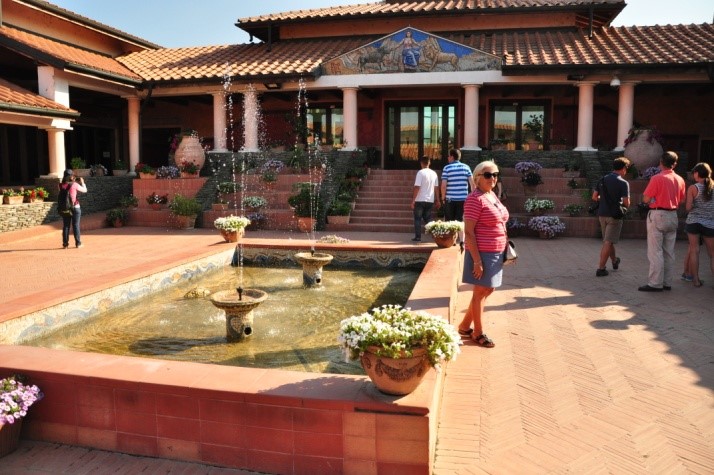
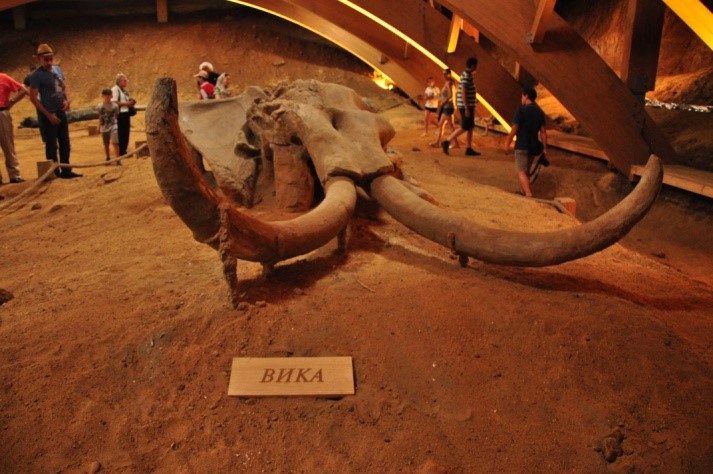
At the end of the field trip we visited Radmilovac which is an organizational unit of the Faculty of Agriculture. Part of the teaching, professional and production practices and other forms of labor are performed at this estate as part of the curriculum of undergraduate studies to meet the needs of the Faculty and other users. It is a unique national resource in several areas of agricultural science.
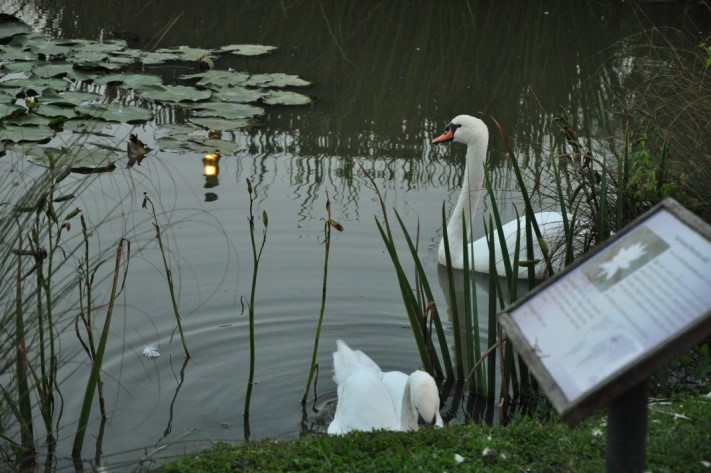
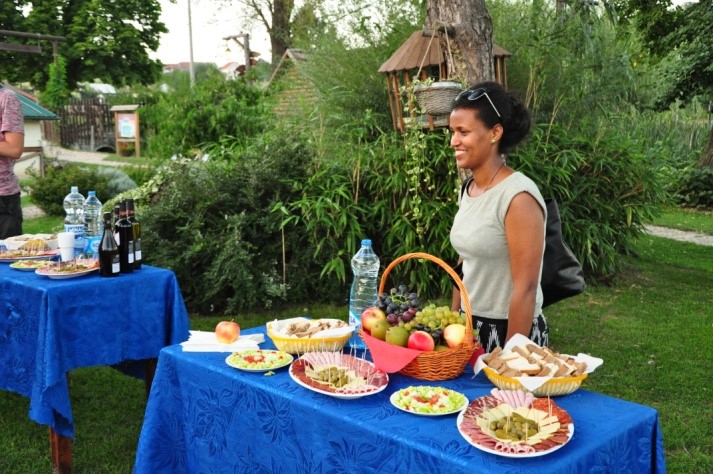
A significant part of EE "Radmilovac" is the gene bank of fruit trees and vines used as a source of genetic material for the improvement of various characteristics of fruit trees and vines in combining genetic basis of available varieties, biotypes and hybrids in the creation of new improved varieties of fruit trees and vines. A total of 23 new varieties of vines (15 table varieties and 8 wine varieties) and one variety of peach were created at EE "Radmilovac". A total of 8 new clones of vines has been recognized, and a certain number of new genotypes of cherry, sour cherry, apricot, raspberry and vine are in the process of recognition.
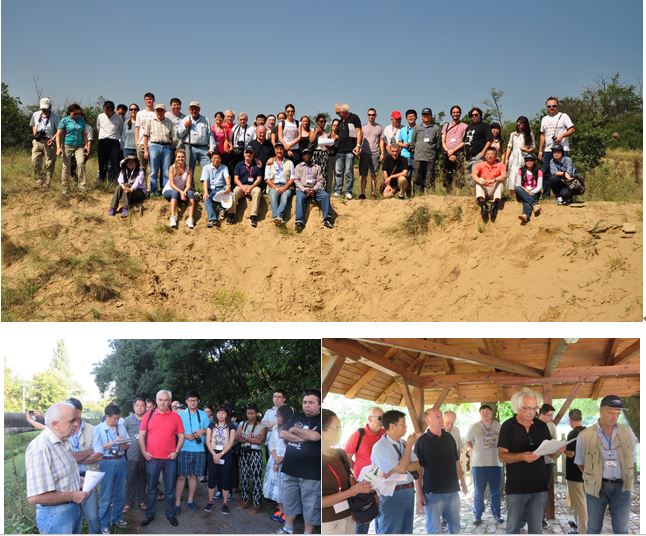
Good conference atmosphere was concluded with "a glass of conversation", by testing good sorts of wine and discussing professional issues.

